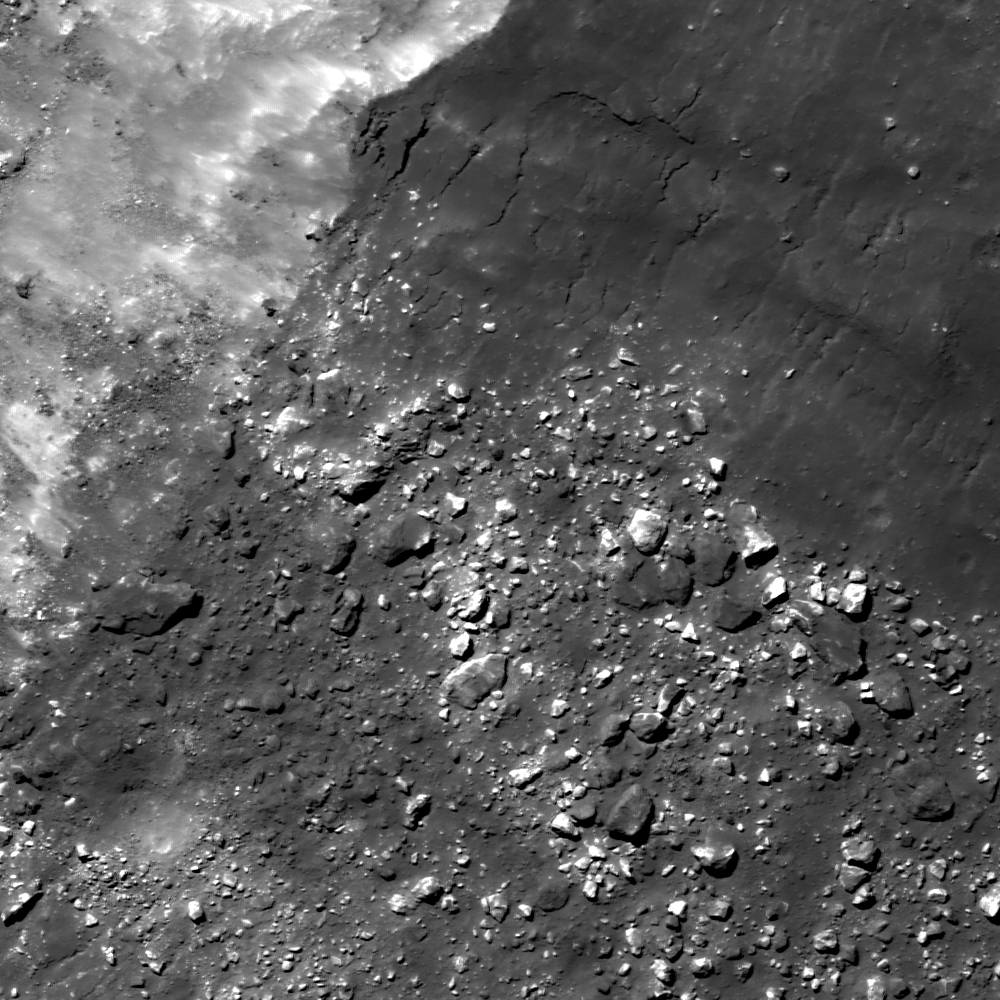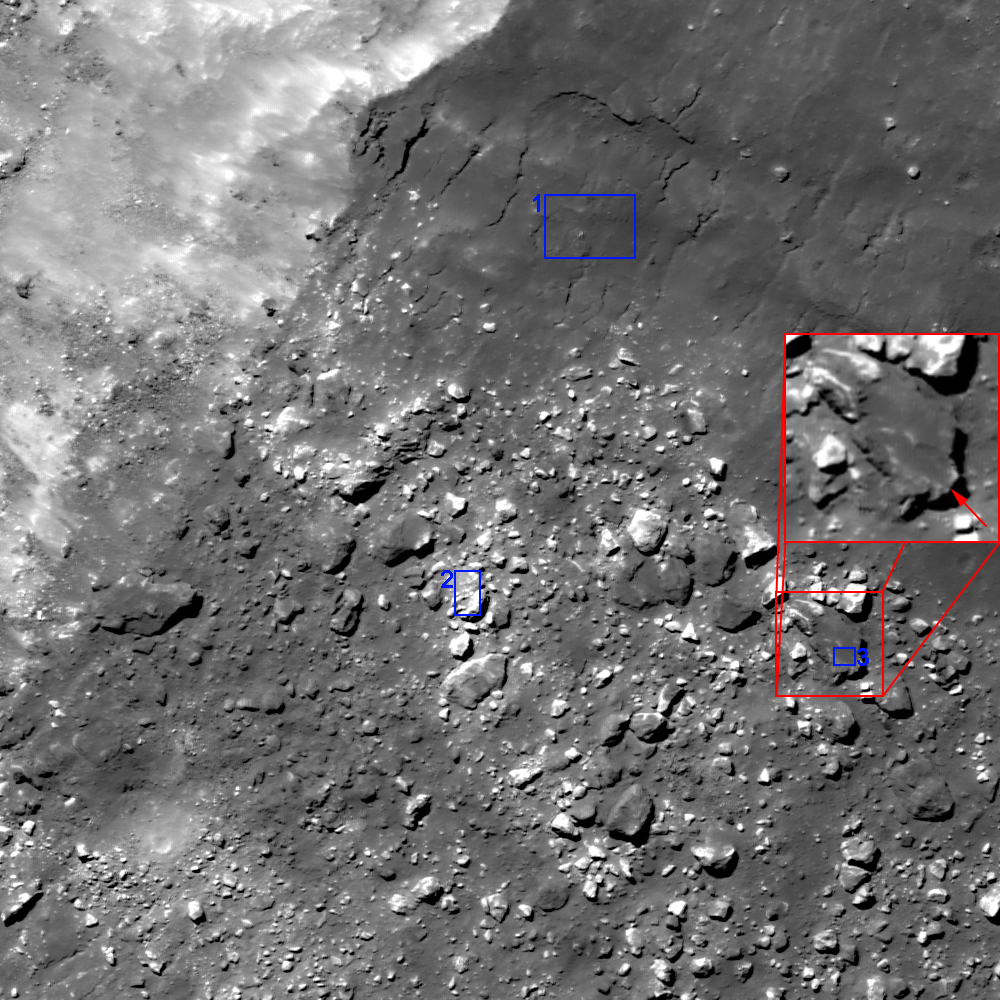
We have featured the impact melt flows of Byrgius A before, but today we are focusing on the ejecta. Above we can see that the ejecta blocks have a mixture of two reflectance levels. Maybe the impact is excavating two separate geologic units: one with low reflectance, and the other with high reflectance. Or, perhaps the bright, high reflectance ejecta blocks were covered by darker, lower reflectance impact melt. Can we figure out which hypothesis is correct?
If the crater is excavating two different units, then we should expect to see nearby craters exposing the same. We don't see this in the context image. Several lines of evidence argue instead that impact melt covers some boulders: [1] the darker boulders have a similar reflectance to the impact melt, and [2] the dark boulders have pools of material.
Nearby melt on the rim has formed a veneer over the original surface, and we can see the melt fracturing parallel to the crater rim. This veneer unit has a reflectance of 0.14, close to the dark boulders with a reflectance of 0.155. The bright boulders have a reflectance of 0.25. The dark boulders also have small ponds of material. Larger melt ponds develop in depressions exterior to their parent crater, and this is likely the same process operating on a small scale.
Can you test the hypotheses further with the full LROC NAC?
Related Posts: Ejecta Starburst
Published by Drew Enns on 4 October 2012

